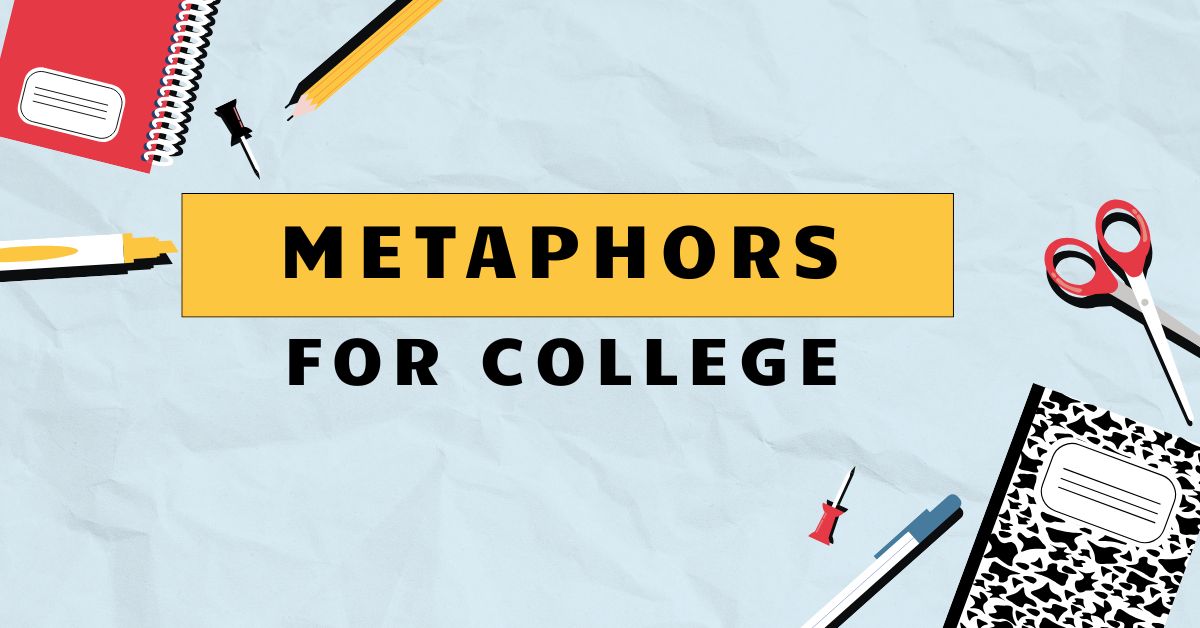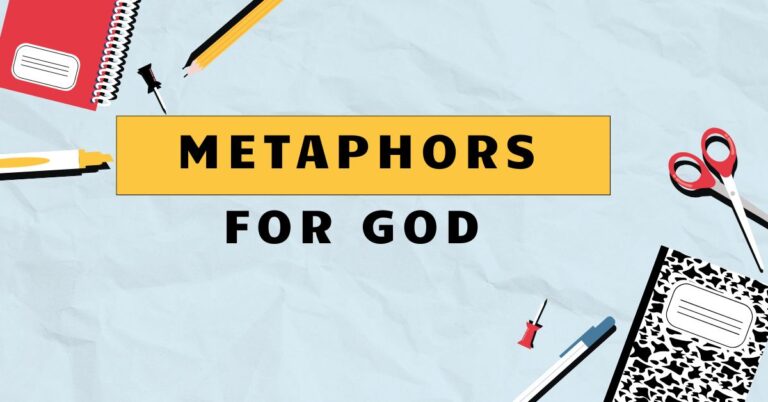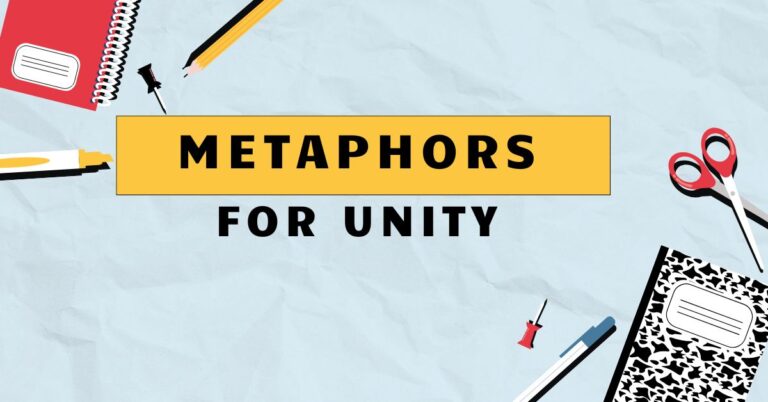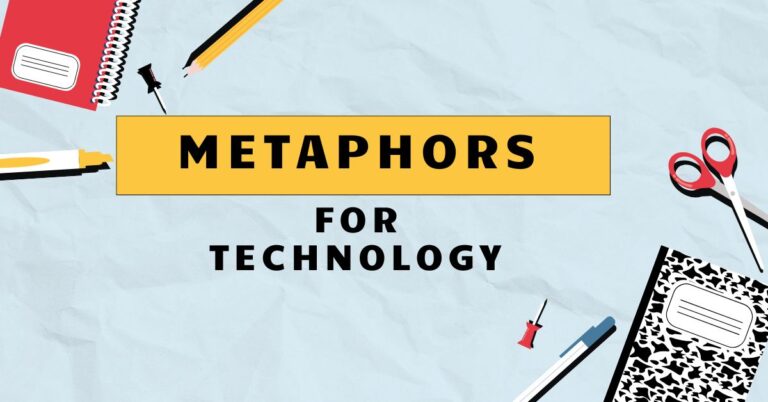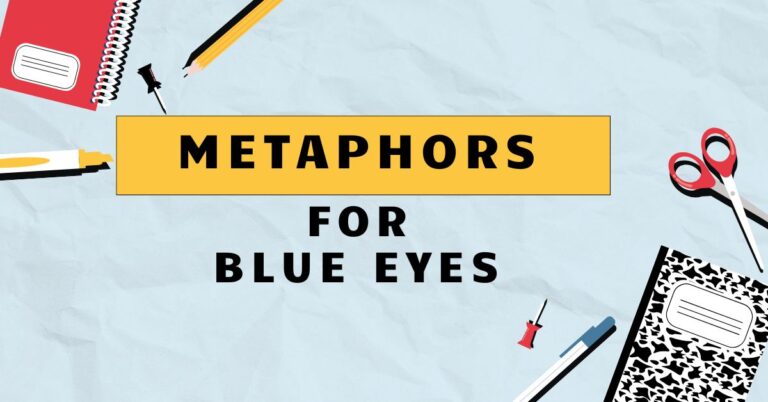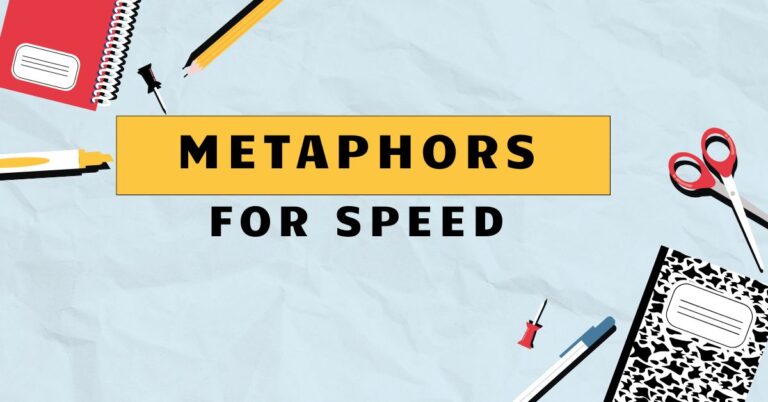33 College as Metaphor: Understanding Figurative Language
Metaphors are powerful tools in the English language, allowing us to understand complex ideas by relating them to something familiar. When we talk about college, we often use metaphors to describe the experience, the challenges, and the transformations that occur.
Understanding these metaphors not only enhances our comprehension of the college journey but also deepens our appreciation for the nuances of language. This article explores the various ways college is represented through metaphors, providing a comprehensive guide for students, educators, and language enthusiasts alike.
By examining these figurative expressions, we can gain a richer perspective on the educational landscape and improve our ability to communicate effectively about it. This guide is particularly beneficial for students navigating higher education, educators seeking to articulate the college experience, and anyone interested in mastering figurative language in English.
Table of Contents
- Definition of Metaphor
- Structural Breakdown of Metaphors
- Types of Metaphors
- Metaphors for College
- Examples of College Metaphors
- Usage Rules for Metaphors
- Common Mistakes with Metaphors
- Practice Exercises
- Advanced Topics in Metaphorical Analysis
- Frequently Asked Questions
- Conclusion
Definition of Metaphor
Ametaphoris a figure of speech that directly compares two unrelated things without using “like” or “as.” It asserts that one thingisanother, creating a connection that illuminates new understanding and insights. Metaphors are essential for abstract thinking and communication, allowing us to convey complex ideas in a vivid and relatable way.
Unlike similes, which use explicit comparison, metaphors imply a deeper, more symbolic relationship between the two subjects.
The function of a metaphor extends beyond mere decoration of language. It serves as a cognitive tool that helps us to conceptualize abstract ideas in more concrete terms.
By associating something unfamiliar with something familiar, metaphors make complex concepts more accessible and easier to grasp. In the context of college, metaphors can help students, educators, and administrators understand the multifaceted nature of higher education, from the challenges and opportunities it presents to the personal growth and transformation it fosters.
Metaphors appear in various contexts, from everyday conversation to literature, poetry, and academic discourse. They are used to persuade, to explain, to evoke emotions, and to provide new perspectives.
Understanding how metaphors work, and how to use them effectively, is a valuable skill for anyone seeking to improve their communication and critical thinking abilities. When used thoughtfully, metaphors can enrich our understanding of the world around us and enhance our ability to express ourselves with clarity and creativity.
Structural Breakdown of Metaphors
Understanding the structure of a metaphor is crucial for both interpreting and creating effective figurative language. A metaphor typically consists of two main elements: thetenorand thevehicle.
The tenor is the subject to which the metaphor refers, while the vehicle is the object or concept used to describe the tenor. The vehicle carries the metaphorical meaning, transferring its qualities to the tenor.
For example, in the metaphor “College is a marathon,” the tenor is “college,” and the vehicle is “marathon.” The qualities associated with a marathon – endurance, perseverance, and a long, challenging course – are transferred to the concept of college. This helps us understand college as a demanding but ultimately rewarding experience that requires sustained effort and commitment.
The connection between the tenor and the vehicle is not arbitrary; it is based on shared characteristics or associations that create a meaningful comparison.
Effective metaphors rely on the audience’s understanding of the vehicle to illuminate the tenor. The more familiar the audience is with the vehicle, the more readily they will grasp the intended meaning of the metaphor.
However, the effectiveness of a metaphor also depends on the appropriateness of the comparison. A poorly chosen vehicle can confuse or mislead the audience, undermining the intended message.
Therefore, when crafting metaphors, it is important to carefully consider the associations and connotations of the vehicle and how they relate to the tenor.
The underlying structure of a metaphor often involves a process ofabstractionandmapping. Abstraction involves identifying the key characteristics or qualities of the vehicle that are relevant to the tenor.
Mapping involves transferring these qualities from the vehicle to the tenor, creating a new understanding of the subject. This process of abstraction and mapping is essential for making sense of metaphorical language and appreciating its power as a tool for communication and thought.
Types of Metaphors
Metaphors can be categorized in several ways, based on their structure, function, and level of explicitness. Here are some common types of metaphors:
Explicit Metaphors
Explicit metaphors directly state the comparison between the tenor and the vehicle. They are often introduced with phrases like “is,” “are,” or “was.” For example, “College is a crucible” is an explicit metaphor that directly equates college with a transformative and challenging experience.
Implicit Metaphors
Implicit metaphors imply the comparison without explicitly stating it. The vehicle is present, but the tenor is not directly mentioned.
For example, instead of saying “College is a battlefield,” an implicit metaphor might describe the challenges of college using battle-related language, such as “Students are fighting to survive the semester.”
Extended Metaphors
Extended metaphors are developed over several lines or paragraphs, with multiple points of comparison between the tenor and the vehicle. They allow for a more detailed and nuanced exploration of the relationship between the two subjects.
For example, a poem or essay might develop the metaphor of college as a journey, exploring different stages of the journey and their corresponding challenges and rewards.
Dead Metaphors
Dead metaphors are metaphors that have become so commonplace that they no longer register as figurative language. They are often used without conscious awareness of their metaphorical origin.
For example, phrases like “time is money” or “the heart of the matter” were once vivid metaphors but are now considered clichés.
Mixed Metaphors
Mixed metaphors combine two or more inconsistent metaphors in a single expression, often resulting in a confusing or humorous effect. For example, “We need to nip this problem in the bud before it snowballs out of control” combines the metaphors of pruning a plant and rolling a snowball, creating a nonsensical image.
Metaphors for College
College, as a multifaceted experience, lends itself to a variety of metaphorical interpretations. These metaphors can help us understand the various aspects of college life, from its challenges and opportunities to its personal transformations.
Here are some common categories of metaphors used to describe college:
College as a Journey
This is one of the most common metaphors for college, emphasizing the idea of progress, exploration, and discovery. College is seen as a path that students travel, encountering various obstacles and milestones along the way.
This journey leads to new knowledge, skills, and personal growth.
College as a Battle
This metaphor highlights the challenges and struggles that students face in college, such as demanding coursework, competitive environments, and financial pressures. College is portrayed as a war that students must fight to succeed, requiring resilience, determination, and strategic planning.
College as Growth
This metaphor focuses on the personal and intellectual development that occurs during college. College is seen as a nurturing environment that allows students to blossom and reach their full potential.
This growth involves expanding one’s knowledge, developing critical thinking skills, and discovering one’s passions.
College as Building
This metaphor emphasizes the idea of constructing a foundation for future success. College is seen as a process of building knowledge, skills, and networks that will support students in their careers and personal lives.
This building process requires careful planning, hard work, and attention to detail.
College as Transformation
This metaphor highlights the profound changes that students undergo during their college years. College is seen as a catalyst for personal and intellectual transformation, leading to new perspectives, values, and identities.
This transformation involves challenging one’s beliefs, exploring new ideas, and developing a sense of self-awareness.
Examples of College Metaphors
The following tables provide examples of metaphors used to describe college, categorized by the themes: journey, battle, growth, building, and transformation. Each table contains 20-30 examples to illustrate the diverse ways in which college can be understood through figurative language.
College as a Journey: Examples
The following table contains 25 examples of “College as a Journey” metaphors. These examples highlight the path, exploration, and discovery aspects of the college experience.
| Metaphor | Explanation |
|---|---|
| College is a winding road. | The college experience is full of twists and turns. |
| My education is a map to my future. | Education guides and directs one’s future path. |
| Freshman year was a stepping stone. | The first year of college is an initial step towards higher goals. |
| Graduation is the summit of a long climb. | Graduation represents the culmination of years of hard work. |
| College is a voyage of discovery. | College provides a chance to explore new subjects and ideas. |
| Each course is a new horizon. | Every course offers a new perspective and learning opportunity. |
| The library is a treasure trove of knowledge. | The library is a rich source of information and wisdom. |
| My degree is my passport to the world. | A degree opens doors to global opportunities. |
| College is a path to enlightenment. | College leads to greater understanding and awareness. |
| The campus is a landscape of learning. | The campus provides a setting for intellectual growth. |
| College is a quest for knowledge. | The pursuit of knowledge is a central aspect of college. |
| Each semester is a leg of the journey. | Semesters are distinct stages in the college experience. |
| The diploma is the destination. | The diploma represents the ultimate goal of college. |
| College life is a scenic route. | College offers many enriching experiences along the way. |
| My major is my compass. | A major guides one’s academic and career focus. |
| Studying abroad is a detour worth taking. | Studying abroad provides valuable, unique experiences. |
| The professors are my guides. | Professors offer guidance and support to students. |
| College is an expedition into the unknown. | College allows students to explore unfamiliar territories of knowledge. |
| Each assignment is a milestone. | Assignments mark progress and achievement in college. |
| The career center is my roadmap. | The career center helps students plan their professional future. |
| College is like climbing a mountain. | College requires effort, perseverance, and leads to a great view. |
| My student loans are the baggage I carry. | Student loans can be a burden that students must manage. |
| The university is a gateway to success. | The university provides opportunities for achieving future goals. |
| College is a path paved with challenges. | The college journey is not always easy and requires overcoming obstacles. |
| My graduation is the light at the end of the tunnel. | Graduation is a goal that motivates students through difficult times. |
College as a Battle: Examples
The following table contains 25 examples of “College as a Battle” metaphors. These examples emphasize the challenges, struggles, and competitive aspects of the college experience.
| Metaphor | Explanation |
|---|---|
| College is a battlefield. | College is a challenging and competitive environment. |
| Exams are my nemesis. | Exams are a constant source of stress and difficulty. |
| The library is my fortress. | The library provides a safe and quiet place to study. |
| My GPA is my armor. | A good GPA protects one’s academic standing. |
| Procrastination is my enemy. | Procrastination hinders progress and success. |
| Each assignment is a skirmish. | Assignments are small battles that contribute to the overall war. |
| The professor is my drill sergeant. | The professor pushes students to achieve their best. |
| Late nights are my weapon. | Students often resort to late-night study sessions. |
| Stress is my constant companion. | Stress is a common and unavoidable part of college life. |
| Doubt is my saboteur. | Self-doubt can undermine one’s confidence and performance. |
| My study group is my squad. | Study groups provide support and camaraderie. |
| The workload is a siege. | The heavy workload can feel overwhelming. |
| Success is my victory. | Achieving academic goals is a triumph. |
| Failure is a casualty. | Failing a course or assignment is a setback. |
| Competition is fierce. | The academic environment is highly competitive. |
| My tuition is a financial burden. | Tuition costs can be a significant challenge. |
| Deadlines are my ticking bombs. | Deadlines create pressure and urgency. |
| Cramming is my last-ditch effort. | Cramming is a desperate attempt to prepare for exams. |
| Burning the midnight oil is my strategy. | Studying late into the night is a common tactic. |
| Overcoming obstacles is my training. | Challenges in college prepare students for future difficulties. |
| College is a trial by fire. | College tests one’s resilience and determination. |
| My academic advisor is my strategist. | Advisors help students plan their academic path. |
| The university is an arena. | The university is a competitive environment where students strive to succeed. |
| My determination is my shield. | Determination protects students from discouragement and setbacks. |
| College is a constant struggle for survival. | College can be very challenging, requiring constant effort and resilience. |
College as Growth: Examples
The following table contains 25 examples of “College as Growth” metaphors. These examples emphasize the personal and intellectual development aspects of the college experience.
| Metaphor | Explanation |
|---|---|
| College is a greenhouse. | College provides a nurturing environment for growth. |
| My mind is a garden. | The mind can be cultivated and developed through learning. |
| Knowledge is the seed of wisdom. | Knowledge is the foundation for deeper understanding. |
| Each course is a watering can. | Courses provide nourishment for intellectual growth. |
| Professors are the gardeners. | Professors cultivate and guide students’ learning. |
| My potential is a blossoming flower. | College helps students realize their full potential. |
| Challenges are the fertilizer. | Challenges promote growth and resilience. |
| Success is the fruit of my labor. | Hard work leads to rewarding outcomes. |
| Education is the sunshine. | Education provides enlightenment and warmth. |
| My degree is the harvest. | A degree represents the culmination of years of growth. |
| College is a journey of self-discovery. | College provides opportunities for personal growth and self-awareness. |
| The campus is a fertile ground. | The campus offers a rich environment for learning and development. |
| My ideas are sprouting. | New ideas are emerging and developing. |
| Learning is like planting seeds. | Learning involves nurturing and developing new knowledge. |
| My understanding is blossoming. | Understanding is deepening and expanding. |
| The library is a wellspring of knowledge. | The library is a rich source of information and inspiration. |
| My creativity is flourishing. | Creativity is thriving and expanding. |
| College is a nurturing environment. | College supports students’ personal and intellectual growth. |
| My skills are developing roots. | Skills are becoming more established and ingrained. |
| Education is the key to unlocking my potential. | Education provides the means to achieve one’s goals. |
| College is where minds are cultivated. | College is an institution that promotes intellectual growth. |
| My critical thinking is sharpening. | Critical thinking skills are becoming more refined. |
| The university is a garden of knowledge. | The university provides a diverse range of learning opportunities. |
| My confidence is growing stronger. | Confidence is increasing through academic success. |
| College is a fertile ground where dreams take root. | College offers the environment and resources for pursuing aspirations. |
College as Building: Examples
The following table contains 20 examples of “College as Building” metaphors. These examples illustrate how college constructs a foundation for future success.
| Metaphor | Explanation |
|---|---|
| College is laying the foundation for my future. | College provides essential skills and knowledge for future success. |
| Each course is a brick in my education. | Each course contributes to the overall structure of one’s education. |
| My degree is the blueprint for my career. | A degree provides a plan for one’s professional path. |
| The university is a construction site for dreams. | The university provides resources and opportunities for achieving dreams. |
| My skills are the building blocks of success. | Skills are essential components for achieving goals. |
| Networking is building bridges. | Networking creates connections and opportunities. |
| My professors are the architects of my education. | Professors design and guide students’ learning experiences. |
| Knowledge is the mortar holding it all together. | Knowledge provides cohesion and strength to one’s education. |
| Each semester is a new story. | Semesters add layers and depth to the college experience. |
| The library is the cornerstone of the university. | The library is a fundamental resource for learning and research. |
| College is an investment in my future. | College provides long-term benefits and returns. |
| My major is the framework of my career. | A major provides a structure and focus for one’s professional path. |
| Internships are the scaffolding. | Internships provide temporary support and practical experience. |
| My resume is my portfolio. | A resume showcases one’s skills and accomplishments. |
| Learning is like constructing a building. | Learning involves assembling knowledge and skills. |
| My education is a solid structure. | Education provides a strong and stable foundation. |
| The university is a workshop of the mind. | The university provides tools and resources for intellectual development. |
| My achievements are monuments to my hard work. | Achievements represent the results of dedication and effort. |
| College is the foundation upon which I build my dreams. | College provides the essential groundwork for pursuing aspirations. |
| The campus is a hub of innovation. | The campus fosters creativity and new ideas. |
Usage Rules for Metaphors
Using metaphors effectively requires understanding the rules that govern their proper use. Here are some key guidelines to follow:
- Ensure Clarity: The metaphor should enhance understanding, not confuse the audience. Choose vehicles that are familiar and relevant to the tenor.
- Maintain Consistency: Avoid mixing metaphors that create contradictory or nonsensical images. Stick to a single, coherent metaphorical framework.
- Consider Context: The appropriateness of a metaphor depends on the context in which it is used. Be mindful of the audience, the purpose of the communication, and the overall tone.
- Avoid Clichés: Overused metaphors lose their impact and can make your writing sound stale. Strive for originality and creativity in your figurative language.
- Use Sparingly: While metaphors can be powerful, overuse can dilute their effectiveness. Use them judiciously to highlight key ideas and add depth to your communication.
Common Mistakes with Metaphors
Several common mistakes can undermine the effectiveness of metaphors. Recognizing and avoiding these errors will help you use figurative language more skillfully.
| Mistake | Incorrect Example | Correct Example |
|---|---|---|
| Mixed Metaphor | “We need to nip this problem in the bud before it snowballs out of control.” | “We need to address this problem early before it escalates.” |
| Cliché | “College was a real eye-opener.” | “College broadened my perspective in unexpected ways.” |
| Unclear Vehicle | “College is a flurgle.” | “College is a crucible, forging character and resilience.” |
| Inappropriate Tone | “College is a walk in the park when it is clearly challenging.” | “College is a challenging but rewarding journey.” |
| Overuse | “College is a journey, a battle, a garden, and a building.” | “College is a transformative journey.” |
Practice Exercises
Test your understanding of metaphors with these practice exercises. Identify the type of metaphor used in each sentence and explain its meaning.
Also, correct the sentences that contain mistakes.
Exercise 1: Identifying Metaphors
Identify the metaphor used in each sentence and explain its meaning.
| Question | Answer |
|---|---|
| 1. College is a rollercoaster. | Metaphor: Rollercoaster. Meaning: College has ups and downs. |
| 2. The professor’s lecture was a fountain of knowledge. | Metaphor: Fountain. Meaning: The lecture was a rich source of information. |
| 3. My student loans are a heavy anchor. | Metaphor: Anchor. Meaning: Student loans are a significant burden. |
| 4. College is a marathon, not a sprint. | Metaphor: Marathon. Meaning: College requires endurance and perseverance. |
| 5. The library is a treasure island. | Metaphor: Treasure island. Meaning: The library is full of valuable resources. |
| 6. My roommate is a whirlwind. | Metaphor: Whirlwind. Meaning: My roommate is energetic and chaotic. |
| 7. The campus is a melting pot of cultures. | Metaphor: Melting pot. Meaning: The campus is diverse and inclusive. |
| 8. My education is a ladder to success. | Metaphor: Ladder. Meaning: Education provides steps to achieve goals. |
| 9. College is a bridge to my future. | Metaphor: Bridge. Meaning: College connects me to future opportunities. |
| 10. The dean is the captain of the ship. | Metaphor: Captain. Meaning: The dean leads and guides the university. |
Exercise 2: Correcting Mistakes
Correct the sentences that contain mixed metaphors or clichés.
| Question | Answer |
|---|---|
| 1. We need to grab the bull by the horns and nip it in the bud. | Corrected: We need to address the problem directly and promptly. |
| 2. College was a piece of cake. | Corrected: College was challenging but rewarding. |
| 3. The professor’s explanation was crystal clear as mud. | Corrected: The professor’s explanation was confusing and unclear. |
| 4. My future is a blank canvas, but I’m ready to hit the ground running. | Corrected: My future is full of possibilities, and I’m ready to pursue them. |
| 5. This project is a real shot in the arm, but it’s also a tough row to hoe. | Corrected: This project is a valuable opportunity, but it also requires hard work. |
| 6. We must stay the course or be dead in the water. | Corrected: We must persevere to avoid failing. |
| 7. The journey of college is a long and winding road, and we must seize the day. | Corrected: The journey of college is challenging, and we must make the most of it. |
| 8. His ideas were a breath of fresh air, but we need to keep our eyes on the ball. | Corrected: His ideas were innovative, but we need to stay focused. |
| 9. Let’s think outside the box and grab the low-hanging fruit. | Corrected: Let’s be creative and start with the easiest tasks. |
| 10. The situation is a double-edged sword, but we must bite the bullet. | Corrected: The situation has both advantages and disadvantages, and we must face it. |
Advanced Topics in Metaphorical Analysis
For advanced learners, exploring the theoretical underpinnings of metaphor can provide a deeper understanding of its cognitive and linguistic functions. Some advanced topics include:
- Conceptual Metaphor Theory: This theory, developed by George Lakoff and Mark Johnson, posits that metaphors are not merely linguistic devices but fundamental cognitive structures that shape our understanding of the world.
- Metaphor and Framing: Metaphors can be used to frame issues and influence public opinion. Analyzing the metaphors used in political discourse can reveal underlying ideologies and persuasive strategies.
- Cross-Cultural Metaphors: Different cultures may use different metaphors to understand the same concepts. Studying these variations can provide insights into cultural differences and cognitive processes.
- Metaphor in Literature: Literary scholars analyze metaphors to uncover deeper meanings and themes in texts. Understanding the metaphorical language used by authors can enhance our appreciation of their work.
Frequently Asked Questions
Here are some frequently asked questions about metaphors:
- What is the difference between a metaphor and a simile?
A metaphor directly equates two things without using “like” or “as,” while a simile uses “like” or “as” to make a comparison. For example, “College is a marathon” (metaphor) vs. “College is like a marathon” (simile).
- How do metaphors enhance communication?
Metaphors make abstract ideas more concrete and relatable, helping audiences understand complex concepts more easily. They also add vividness and emotional resonance to language.
- Why is it important to avoid mixed metaphors?
Mixed metaphors create confusing or nonsensical images, undermining the clarity and effectiveness of communication. They can also make the speaker or writer appear careless or illogical.
- How can I improve my ability to use metaphors effectively?
Read widely, pay attention to the metaphors used by others, and practice creating your own metaphors. Be mindful of the context, audience, and purpose of your communication.
- What is a dead metaphor?
A dead metaphor is a metaphor that has become so commonplace that it no longer registers as figurative language. Examples include “time is money” and “the heart of the matter.”
- How can I identify metaphors in a text?
Look for statements that assert that one thing is another, without using “like” or “as.” Consider whether the comparison is literal or figurative. If it is figurative, it is likely a metaphor.
- Can a metaphor be too complex?
Yes, a metaphor can be too complex if the vehicle is unfamiliar or the connection between the tenor and the vehicle is obscure. The metaphor should enhance understanding, not create confusion.
- What role do metaphors play in creative writing?
Metaphors are essential tools for creative writers, allowing them to create vivid imagery, evoke emotions, and convey deeper meanings. They add depth and richness to literary works.
- How do cultural differences affect the interpretation of metaphors?
Different cultures may have different associations and understandings of certain objects or concepts, which can affect how metaphors are interpreted. A metaphor that is clear and effective in one culture may be confusing or offensive in another.
- Are metaphors only used in literature and poetry?
No, metaphors are used in various contexts, including everyday conversation, business communication, political discourse, and academic writing. They are a versatile tool for enhancing communication in any setting.
Conclusion
Metaphors are powerful linguistic tools that enhance our understanding of complex concepts, and the college experience is no exception. By examining the metaphors used to describe college – as a journey, a battle, a growth process, or a building endeavor – we gain a richer perspective on the challenges, opportunities, and transformations that higher education entails.
Understanding the structural elements, types, and usage rules of metaphors allows us to communicate more effectively and appreciate the nuances of figurative language.
Avoiding common mistakes, such as mixed metaphors and clichés, is crucial for maintaining clarity and impact. Practice exercises and advanced topics provide opportunities for further exploration and mastery.
Whether you are a student navigating the college journey, an educator seeking to articulate its significance, or simply a language enthusiast, a deeper understanding of metaphors will enrich your communication and critical thinking skills. Embrace the power of figurative language to illuminate new perspectives and express your ideas with creativity and precision.
Continue to explore the world of metaphors and discover the endless possibilities they offer for enhancing your understanding and communication.

